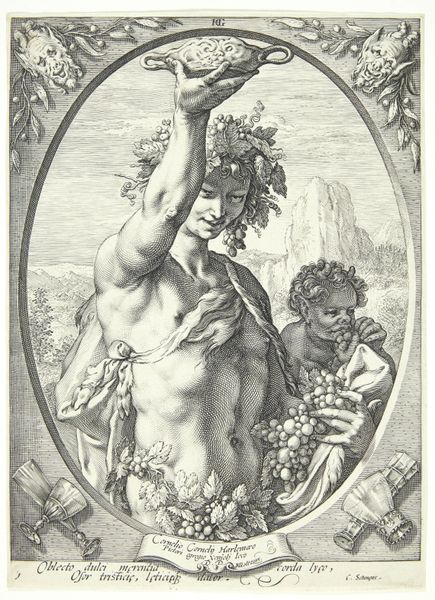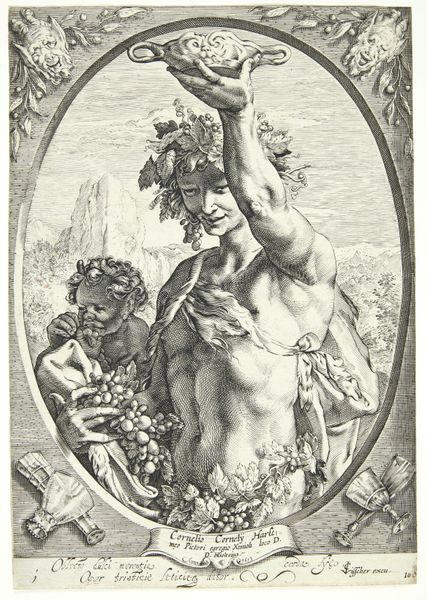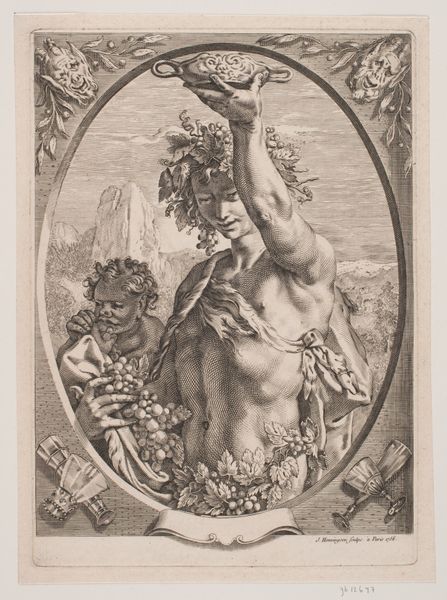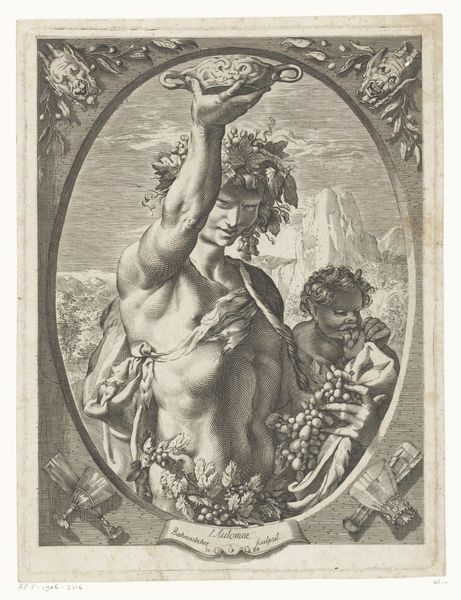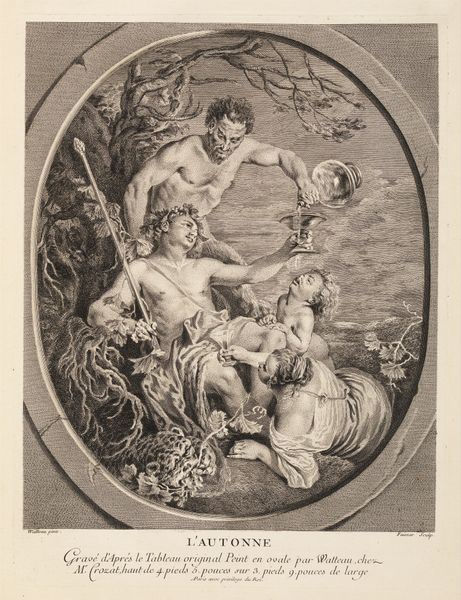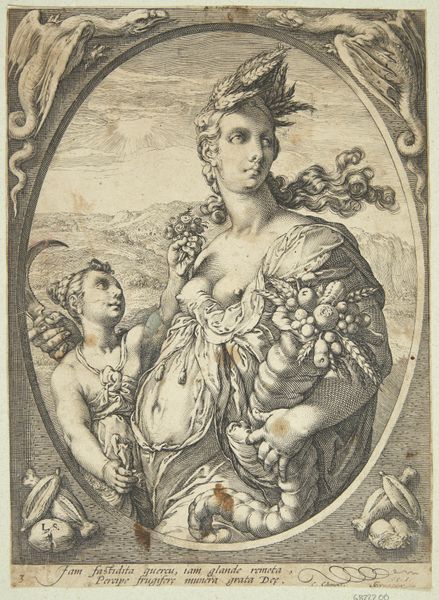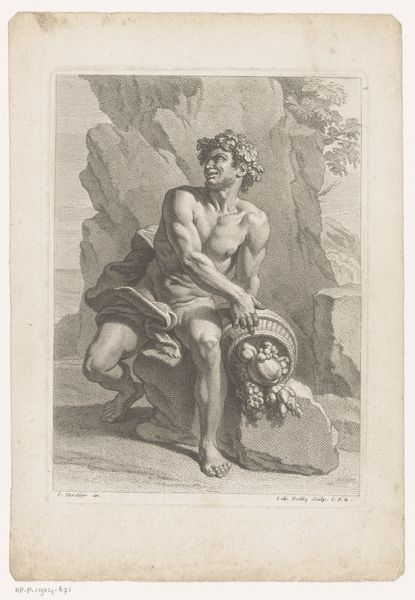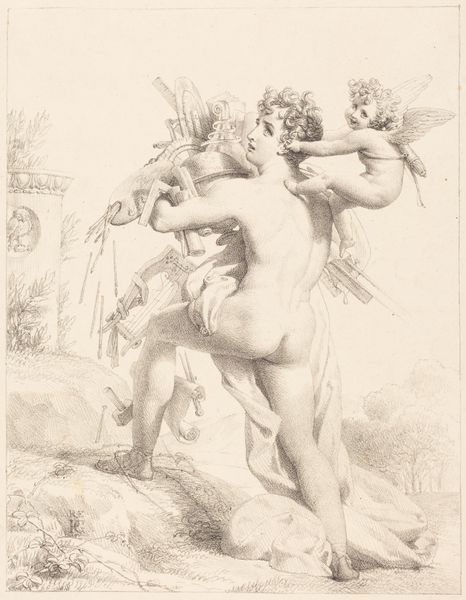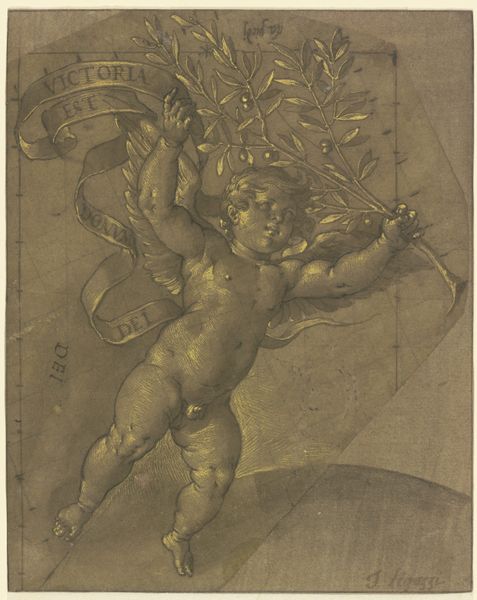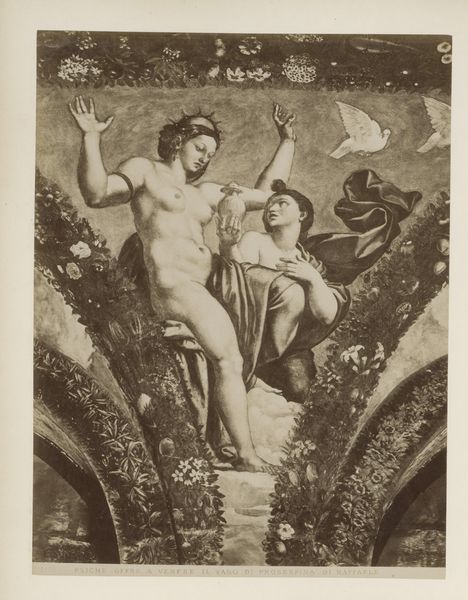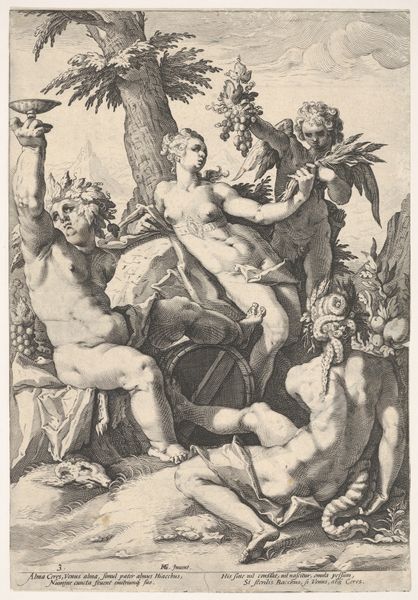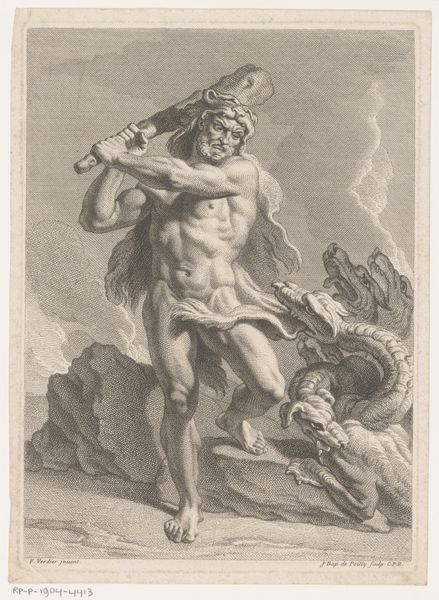
Dimensions: height 241 mm, width 173 mm
Copyright: Rijks Museum: Open Domain
This engraving of Bacchus was created by an anonymous artist, copying Hendrik Goltzius, likely in the Netherlands in the late 16th or early 17th century. The god of wine is shown holding a drinking vessel, wreathed in grapes, with a small child, probably a satyr, also enjoying the fruit. Images of the classical gods were popular in Northern Europe at this time, used by the elite to display their learning and sophistication. Bacchus, in particular, would have been associated with pleasure, abundance, and the enjoyment of life. Here, the artist references classical imagery but also adapts it to the concerns of his own time. The inscription at the bottom of the image reads "Offer tristice leticing date" meaning "Offer sadness to cheerfulness". This could be interpreted as a comment on the religious and political turmoil of the time. The engraving technique itself speaks to the rise of print culture and the importance of visual media for disseminating ideas. Art historians can use sources like inventories, guild records, and contemporary writings to understand the role of art in this period. Ultimately, this image reminds us that art is always a product of its time and place.
Comments
No comments
Be the first to comment and join the conversation on the ultimate creative platform.
